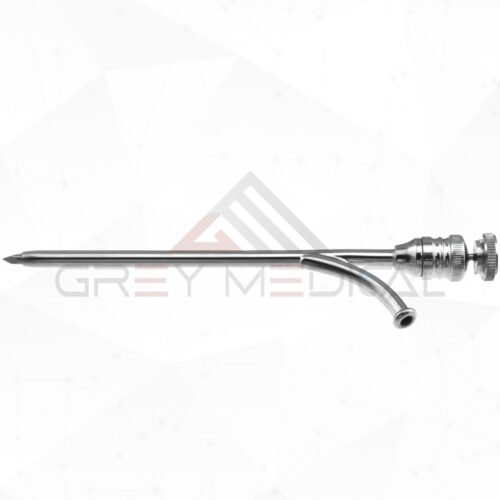In the complex and precise world of surgery, success hinges on visibility and access. Surgeons need an unobstructed view of the operative site to perform delicate procedures with accuracy. This is where the retractor instrument becomes indispensable, playing a foundational role in nearly every surgical specialty. These tools are designed to hold back tissues, organs, or wound edges, creating a clear and stable field for the surgical team to work within.
At GreyMedical®, we understand that the quality of a surgical instrument directly impacts patient outcomes. Our commitment to innovation and excellence drives us to craft instruments that not only meet but exceed the rigorous demands of the operating room. The design and function of a retractor are paramount, ensuring that it provides reliable exposure without causing unnecessary trauma to surrounding tissues.
The Anatomy of Surgical Exposure
A retractor's primary function is to provide exposure. Without adequate visualization, the risk of complications increases significantly. Surgeons rely on these tools to gently but firmly hold back layers of tissue, from skin and fat to muscle and internal organs. This controlled retraction allows them to navigate complex anatomical structures, identify pathologies, and execute precise actions like suturing, excising, or repairing.
The evolution of the retractor instrument reflects the broader advancements in medical technology. Early versions were simple, hand-held hooks. Today, the variety is vast, ranging from hand-held models for superficial procedures to complex, self-retaining systems that can be mounted to the operating table for major surgeries. Each design is meticulously engineered to suit specific anatomical regions and procedural requirements, a principle that guides GreyMedical®’s development process.
Hand-Held vs. Self-Retaining Retractors
Surgical retractors are broadly categorized into two main types: hand-held and self-retaining. Hand-held retractors, such as the Senn or Army-Navy models, require a surgical assistant to hold them in place throughout the procedure. They offer dynamic retraction, allowing for quick adjustments as the surgical needs change. These are often used in shorter, more superficial procedures where the required exposure is minimal.
Self-retaining retractors, on the other hand, are designed to hold tissues apart without continuous human assistance. These instruments, like the Weitlaner or Balfour retractors, have a locking mechanism, such as a ratchet or screw, that keeps the arms of the instrument open and fixed in a specific position. This frees up the hands of the surgical assistant and provides consistent, stable retraction for longer, more complex operations. GreyMedical® focuses on creating both types with superior ergonomics and durable materials, ensuring every retractor instrument delivers optimal performance.
Innovation in Retractor Design
The field of surgical instrument design is constantly evolving, and retractors are no exception. Modern innovations focus on enhancing patient safety, improving surgical efficiency, and minimizing tissue trauma. For example, some advanced retractors incorporate features like malleable blades that can be shaped to conform to specific anatomical contours, reducing pressure points and the risk of nerve or vessel damage. Others are made from radiolucent materials that do not interfere with intraoperative imaging like X-rays.
GreyMedical® is at the forefront of this innovation. We are dedicated to pioneering new designs that address the unmet needs of surgeons. This includes developing specialized retractors for minimally invasive surgery, where creating a working space within a confined area is a significant challenge. By collaborating with surgeons, we gain invaluable insights that inform the creation of the next generation of every retractor instrument we produce.
The Importance of Quality and Precision
The material and manufacturing quality of a surgical retractor are critical. A poorly made instrument can fail during a procedure, potentially leading to catastrophic consequences. Instruments must be crafted from high-grade stainless steel or other durable, corrosion-resistant materials that can withstand repeated sterilization cycles without degrading. The finish is also important; a smooth, non-reflective surface reduces glare under bright operating lights and prevents tissue from sticking.
GreyMedical®’s reputation is built on a foundation of uncompromising quality. Each retractor instrument undergoes a rigorous quality control process to ensure it meets the highest standards of durability, reliability, and precision. Our dedication to excellence in craftsmanship means that surgical teams can trust our instruments to perform flawlessly when it matters most.
Conclusion
The humble retractor instrument is a cornerstone of modern surgery, essential for providing the visibility and access required for safe and effective procedures. From simple hand-held tools to complex self-retaining systems, these instruments are a testament to the blend of engineering and medical science. As a company dedicated to advancing the craft of surgical instruments, GreyMedical® continues to innovate, ensuring that surgeons have the finest tools available to enhance patient care and achieve superior surgical outcomes. Our commitment is to excellence, one instrument at a time.





Comments